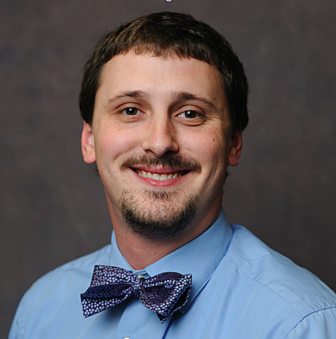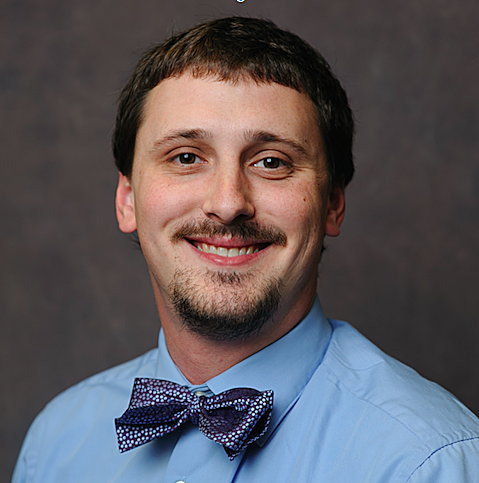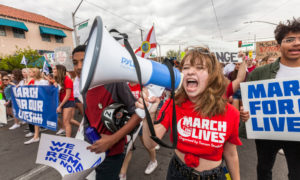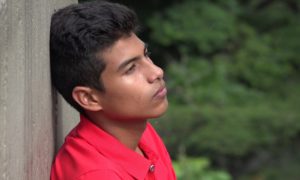 When I arrived at the University of Alabama in fall 2015 I was immediately struck by both the magnitude of resources available on campus and in the surrounding area, along with the need for targeted support in certain communities. All youth have both the right and the need to be supported, feel safe and enjoy their educational experiences.
When I arrived at the University of Alabama in fall 2015 I was immediately struck by both the magnitude of resources available on campus and in the surrounding area, along with the need for targeted support in certain communities. All youth have both the right and the need to be supported, feel safe and enjoy their educational experiences.
Those living and attending school in low-income communities may need these things more than others. Poverty has been identified as an important barrier for academic and social success. There is a need for schools, universities and nonprofit organizations to work together toward more nuanced models of youth development. The after-school time space has emerged as a key programmatic target for expanding upon students’ in-school learning as a way to better meet their individual and social needs.
Along with my colleagues Michael Lawson and Tania Alameda-Lawson, I became particularly interested in supporting children who live in a low-income community near campus (i.e., 85 percent free and reduced-lunch, 95 percent underrepresented minority students). This led to the development of a partnership with a local elementary school in that community; Tuscaloosa’s One Place, a nonprofit organization that coordinates after-school programming across schools in the county; and the College of Education and School of Social Work at the University of Alabama. We have come to call the program Alabama TOPS to align and emphasize our relationship with Tuscaloosa’s One Place (i.e., TOP).
We have written more extensively elsewhere about Alabama TOPS and the primary purpose of the collaboration — to support youth’s learning and development during after-school time. We define learning and development broadly and are concerned with both academic enrichment and the development of life skills such as resilience, grit, self-regulation and social awareness.
Ultimately, we hoped to develop programming and build school-community-family partnerships that would facilitate the transfer of life skills learned in the program to other areas of youth’s lives. With this holistic approach in mind, we worked in collaboration with Tuscaloosa’s One Place to integrate sport-based youth development (SBYD) with an existing focus on academic enrichment in the after-school program. We also utilize the program as a training ground for preservice physical educators to apply teaching skills in a real-world environment.
Teaching personal, social responsibility through SBYD
SBYD is a form of youth development that engages youth in sport and physical activity as a way to concurrently pursue goals related to social, emotional and physical development. Programs using SBYD seek to capitalize on youth’s enjoyment of physical activity and sport by using it as an avenue to promote learning life skills.
We turned specifically to teaching personal and social responsibility (TPSR), which is a best-practice application of SBYD that has become popular in physical education and physical activity settings. TPSR provides a framework for engaging youth in physical activity while focusing on four guiding goals: (1) respect for one’s self and others, (2) participation and showing good effort, (3) self-direction and goal setting, and (4) helping others and developing leadership. The ultimate goal of TPSR is for youth to transfer what they have learned in the program to other areas of their lives.
TPSR is structured around key lesson phases that empower youth to be personally and socially responsible while stressing physical activity and skill development. Relational time begins each lesson. It is an informal period in which the leader talks to participants and encourages them to talk to one another. We usually play youth-selected music in the gymnasium and encourage participation in self-selected games.
The lesson then transitions into an awareness talk, which serves to frame the responsibility focus of the day. One specific responsibility goal is selected (e.g., respect) and students are asked to consider what that goal looks and sounds like, and how they can focus on it in the gym.
The lesson focus follows as program participants learn physical activity content (e.g., tennis, dance) along with the pursuit of responsibility goals (e.g., self-organizing into teams for a soccer game). Toward the end of the lesson, the leader brings youth together for a group meeting during which they collectively reflect on their performance for the day with respect to responsibility. Participants may, for example, be asked to identify and praise someone else in the group who displayed good effort throughout the lesson. Lessons conclude with self-reflection as participants are asked to reflect upon and critique their own performance. They could be asked to share reflections either in writing or orally with the group.
The Alabama TOPS experience
Our after-school program partnership serves 70 youth in grades one to five for two hours a day, five days a week during the academic year. Teachers, counselors and administrators recommended youth for the program based on social, behavioral and/or academic needs. Students are divided into two groups by grade level, and the groups rotate between two activities each day. Both groups have an hour focused on academic enrichment and homework help daily. On Tuesdays and Thursdays the second program hour is filled with enrichment activities that provide youth with access to important skills (e.g., cooking classes).
On Mondays, Wednesday and Fridays, TPSR instruction led by College of Education faculty members and graduate and undergraduate students fills the second hour. Content is planned and delivered by preservice physical education teachers who work with the program for an entire year alongside their academic coursework. This provides for consistency and continuity as relationships between preservice teachers and program youth develop and take shape over time.
Many of the youth are guarded and slow to open up to adults. If preservice teachers only worked in the program for a few weeks or a semester, connections would not be as strong, and youth would be less likely to open up to and learn from them. It also takes preservice teachers time to become comfortable in the setting and to shift from blaming youth for problems they experience while teaching to taking responsibility for effective lesson development.
Preliminary evidence indicates that the program has been a meaningful experience for both youth and the preservice teachers. Youth have shown evidence of internalizing some of the responsibility goals emphasized in the program (e.g., helping others without having to be asked to do so), and preservice teachers have become more comfortable using TPSR. School personnel have started to notice and ask questions about our efforts, particularly as they relate to helping youth develop personal and social responsibility goals that can transfer to the classroom.
We are constantly reminded, however, that youth development in high-poverty areas takes effort and time, and results do not appear overnight. Since every school and community context is unique, we have learned the importance of getting to know the children, teachers and administrators involved in our partnership so as to develop a program to meet the shared needs of all stakeholders. We have learned a great deal through our first year of involvement, and are looking forward to implementing lessons learned as we move into year two.
K. Andrew R. Richards is an assistant professor in the College of Education at the University of Alabama in Tuscaloosa. His research focuses on teacher recruiting, development and ongoing socialization in school settings. He recently co-edited Teacher Socialization in Physical Education: New Perspectives.































